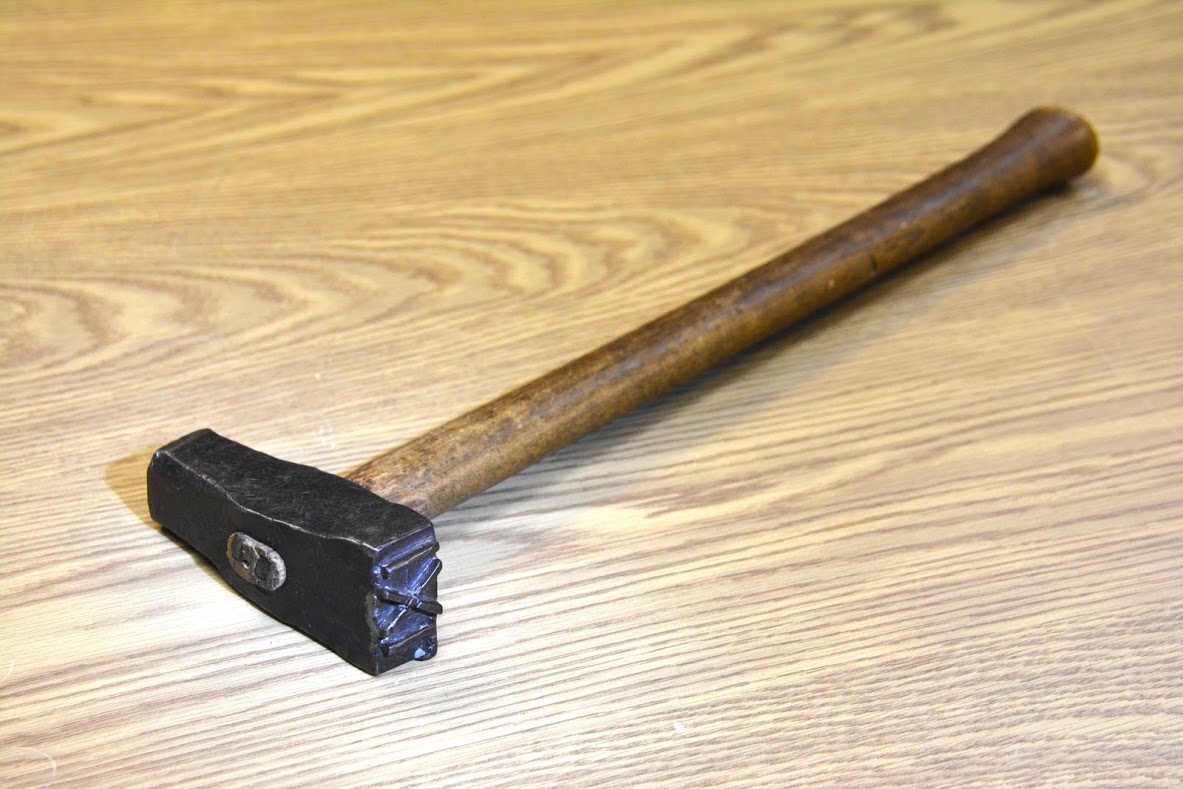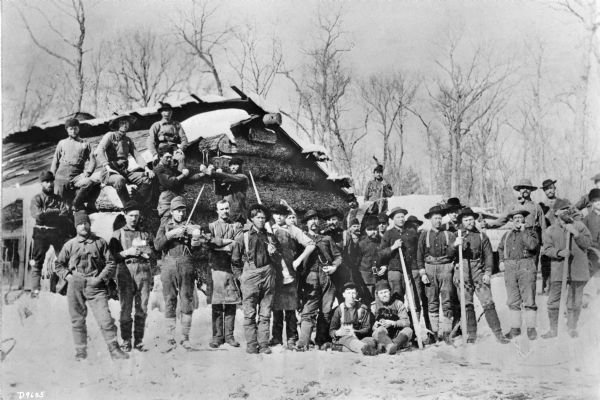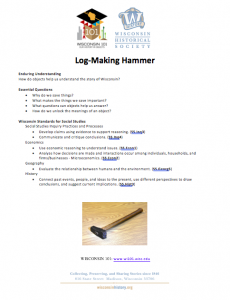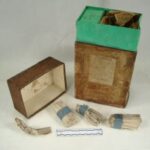 Between the 1840s and the 1890s, logs were highly valued. Logging was one of the largest industries in Wisconsin. There were more than 450 lumber camps across Wisconsin. If we study this log-marking hammer and think about the people who used it, we see how crucial such simple-looking tools were to entire industries and to people’s lives.
Between the 1840s and the 1890s, logs were highly valued. Logging was one of the largest industries in Wisconsin. There were more than 450 lumber camps across Wisconsin. If we study this log-marking hammer and think about the people who used it, we see how crucial such simple-looking tools were to entire industries and to people’s lives.
Log-marking hammers are unlike household hammers. They have wood handles, cast iron heads, and are quite heavy: the head weighs as much as ten pounds. What makes these hammers special is the marking you find at the end of each iron head. This log-marking hammer at the Wisconsin Historical Museum has a bolded “S.” The “S” stood for the Daniel Shaw Lumber Mill in Eau Claire, Wisconsin.
Once they received a batch of logs, lumber mills separated them by lumber companies. To know who cut which tree, lumber mill workers looked for a stamped design at the end of each log that corresponded to a specific lumber company. It was log-marking hammers that made these marks. These marks ensured lumber companies earned money from their work.
Lumberjacks were the men did the work of cutting down the trees for the lumber companies. They worked in the winter months in the Northwoods of Wisconsin. All winter, lumberjacks cut trees and moved them to the banks of frozen rivers. To designate the trees they cut, a lumberjack marked the wood by swinging the log-marking hammer against the log. This was a very important task for stamping the log was the only way to know which lumber company cut it down, and this ensured that the lumber company paid their lumberjacks.

During the spring months, lumberjacks placed the logs they cut down in rivers where they floated downstream until they reached a lumber mill. Cities like Eau Claire, Oshkosh, Black River Falls, and Wausau all employed lumberjacks in the spring to keep their lumber mills operating. The impact of these log-marking hammers was felt far beyond the physical log. The money lumberjacks earned from their work with log-marking hammers supported a wide network of families.
Listen to two musicians play an adapted version of a lumberjack tune on Minnesota Public Radio. Or listen to this tune from the lumberjack camps of Minnesota!
This story is part of the Wisconsin Historical Museum Mini Tour
Written by Ali Pleasant, October 2018.
Download the Log Marking Hammer Lesson Plan


